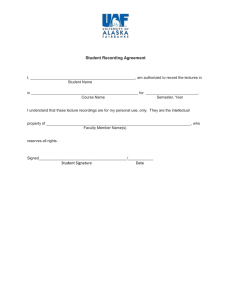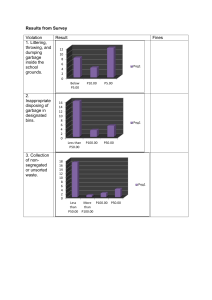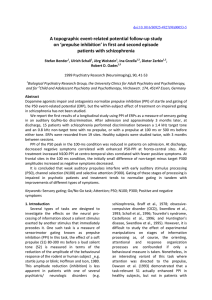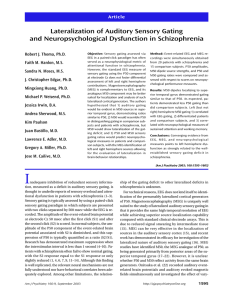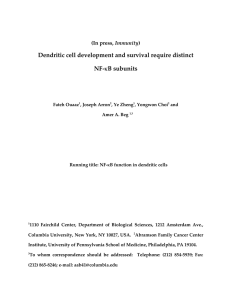Learn more about the childhood P50!
advertisement
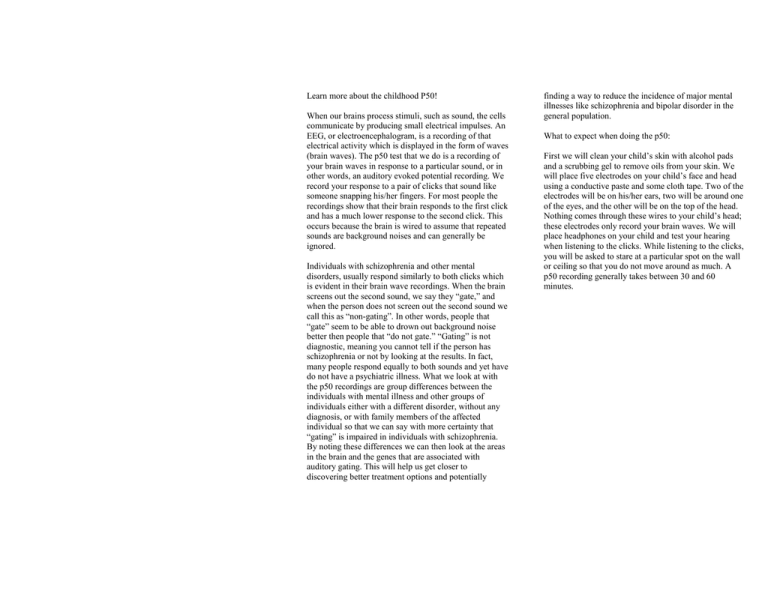
Learn more about the childhood P50! When our brains process stimuli, such as sound, the cells communicate by producing small electrical impulses. An EEG, or electroencephalogram, is a recording of that electrical activity which is displayed in the form of waves (brain waves). The p50 test that we do is a recording of your brain waves in response to a particular sound, or in other words, an auditory evoked potential recording. We record your response to a pair of clicks that sound like someone snapping his/her fingers. For most people the recordings show that their brain responds to the first click and has a much lower response to the second click. This occurs because the brain is wired to assume that repeated sounds are background noises and can generally be ignored. Individuals with schizophrenia and other mental disorders, usually respond similarly to both clicks which is evident in their brain wave recordings. When the brain screens out the second sound, we say they “gate,” and when the person does not screen out the second sound we call this as “non-gating”. In other words, people that “gate” seem to be able to drown out background noise better then people that “do not gate.” “Gating” is not diagnostic, meaning you cannot tell if the person has schizophrenia or not by looking at the results. In fact, many people respond equally to both sounds and yet have do not have a psychiatric illness. What we look at with the p50 recordings are group differences between the individuals with mental illness and other groups of individuals either with a different disorder, without any diagnosis, or with family members of the affected individual so that we can say with more certainty that “gating” is impaired in individuals with schizophrenia. By noting these differences we can then look at the areas in the brain and the genes that are associated with auditory gating. This will help us get closer to discovering better treatment options and potentially finding a way to reduce the incidence of major mental illnesses like schizophrenia and bipolar disorder in the general population. What to expect when doing the p50: First we will clean your child’s skin with alcohol pads and a scrubbing gel to remove oils from your skin. We will place five electrodes on your child’s face and head using a conductive paste and some cloth tape. Two of the electrodes will be on his/her ears, two will be around one of the eyes, and the other will be on the top of the head. Nothing comes through these wires to your child’s head; these electrodes only record your brain waves. We will place headphones on your child and test your hearing when listening to the clicks. While listening to the clicks, you will be asked to stare at a particular spot on the wall or ceiling so that you do not move around as much. A p50 recording generally takes between 30 and 60 minutes.
